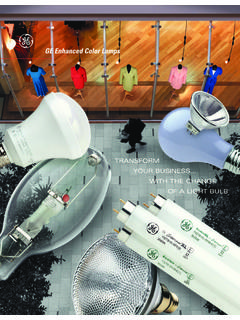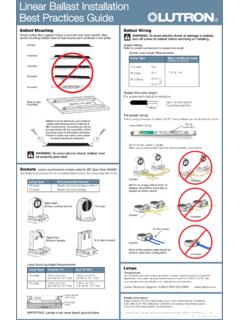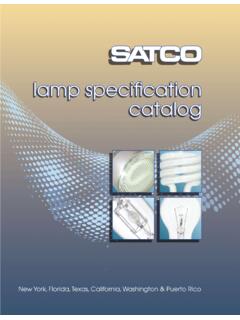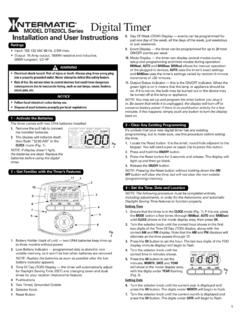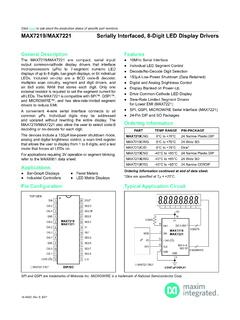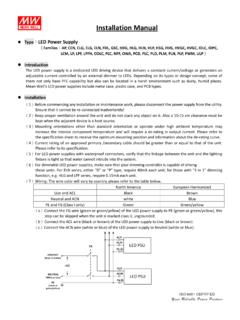Transcription of Understanding LED Drivers - Light Bulbs from the Web's #1 ...
1 May 2014 The information presented in this document, a white paper, was considered technically sound at the time it was approved for publication. This information is not substitute for a product seller s or user s own judgment with respect to a particular product, and does not guarantee the performance of any individual manufacturer s products by virtue of this document. Thus, expressly disclaims any responsibility for damages arising from the use, application, or reliance by others on the information contained in these white papers. Understanding LED Drivers A Original Document 1 What Is An LED Driver? Introduction Due to increasing energy regulations, most people are familiar by now with the long life spans and energy savings associated with LEDs, or Light -emitting diodes. However, many are not aware that these innovative Light sources require specialized devices called LED Drivers to operate.
2 LED Drivers (also known as LED power supplies) are similar to ballasts for fluorescent lamps or transformers for low-voltage Bulbs : they provide LEDs with the electricity they require to function and perform at their best. LEDs require Drivers for two purposes: 1. LEDs are designed to run on low voltage (12-24V), direct current electricity. However, most places supply higher voltage (120-277V), alternating current electricity. An LED driver rectifies higher voltage, alternating current to low voltage, direct current. 2. LED Drivers also protect LEDs from voltage or current fluctuations. A change in voltage could cause a change in the current being supplied to the LEDs. LED Light output is proportional to its current supply, and LEDs are rated to operate within a certain current range (measured in amps). Therefore, too much or too little current can cause Light output to vary or degrade faster due to higher temperatures within the LED.
3 In summary, LED Drivers convert higher voltage, alternating current to low voltage, direct current. They also keep the voltage and current flowing through an LED circuit at its rated level. Internal vs. External Drivers For the aforementioned reasons, every LED Light source requires a driver. However, some LEDs, particularly those designed for household use, contain internal Drivers rather than separate, external Drivers . Household Bulbs usually include an internal driver because it makes replacing old incandescent or CFL Bulbs easier. These include LED Bulbs with standard screw-in or plug-in bases (E26 / E27 or GU24 / GU10 see images below) or those that specify a line-voltage (120 volts) input on their datasheet. LEDs that typically require an external driver include cove lights, downlights, and tape lights, as well as certain fixtures, panels, and outdoor-rated lights.
4 These Bulbs are often used for commercial, outdoor, or roadway lighting purposes. They typically require a separate driver because it s simpler and cheaper to replace the driver than the LEDs. Sometimes, LEDs will come equipped with a separate driver. Other times, manufacturer datasheets will specify whether or not an LED requires a separate driver, along with the type of driver it requires if necessary. 2 Save LEDs: Replace External LED Drivers When an LED stops operating before the end of its rated lifetime, it can usually be saved if the driver is replaced. Drivers often fail prematurely due to high internal operating temperatures. Battery-like components called electrolytic capacitors are typically the cause of death. Electrolytic capacitors have a gel inside them that gradually evaporates over the lifespan of the driver. High temperatures quicken the evaporation of the gel and shorten the life of the capacitor, causing the driver, and hence your LED, to stop working unexpectedly.
5 The temperature within the driver correlates to the external temperature on the driver case. A small circle on the label of most LED Drivers , called the "TC point," is the hottest point on the driver. This point is usually marked with a temperature and is used to determine the driver s max operating temperature. If a driver is used at a temperature too close to this limiting temperature, it will have a shorter lifespan than if it were operated at a lower temperature. This is why Drivers with higher TC points have longer lifetimes. Drivers must be used at operating temperatures below the TC point (or they must at least contain long-life electrolytic capacitors) to ensure that the driver lifetime exceeds the lifetime of the LED. When an LED is not subject to either of these conditions, Drivers can fail and must be replaced. The graph below correlates the lifetime of a typical LED driver to its hotspot temperature.
6 Choosing an LED Driver There are two main types of external LED Drivers , constant-current and constant-voltage, as well as a third type of driver called an AC LED driver which will also be discussed. Each type of driver is designed to operate LEDs with a different set of electrical requirements. When replacing a driver, the old driver s input/output requirements must be matched as closely as possible. Key differences are detailed below. Constant-Current Drivers Constant-current Drivers power LEDs that require a fixed output current and a range of output voltages. There will be only one output current specified, labeled in amps or milliamps, along with a range of voltages that will vary depending on the load (wattage) of the LED. In the example below to the left, the current output is 700mA, and the output voltage range is 4-13V DC (volts of direct current).
7 3 Constant-Voltage Drivers Constant-voltage Drivers power LEDs that require a fixed output voltage with a maximum output current. In these LEDs, the current is already regulated, either by simple resistors or an internal constant-current driver, within the LED module. These LEDs require one stable voltage, usually 12V DC or 24V DC. In the example below to the right, the output voltage is 24V DC, and the output current is a maximum of AC LED Drivers AC LED Drivers are actually no-minimum load transformers, meaning they could technically operate low-voltage halogen or incandescent Bulbs as well. LEDs, however, cannot operate with conventional transformers because conventional transformers were not made to detect the low wattage of LEDs. In other words, LEDs have such a small electrical load that regular transformers do not register that they re wired to a bulb at all.
8 AC LED Drivers are typically used with Bulbs that already contain an internal driver that converts the current from AC to DC, so an AC LED driver s job is to register the low wattage of LEDs and step down the voltage to meet the bulb s voltage requirements, usually 12 or 24 volts. AC LED Drivers are typically used to power 12-24V AC input LED MR16 Bulbs , but they can be used for any 12-24V AC input LED bulb. The LED bulb datasheet must be carefully examined; if the LED bulb requires DC voltage input, it cannot be used with an AC LED driver. Constant-Current Driver Constant-Voltage Driver AC LED Driver 4 Other Factors to Consider Max Wattage According to the NEC (National Electrical Code), LED Drivers should be paired with LEDs that use 20% less than their maximum rated wattage (with the exception of AC LED Drivers ).
9 Drivers should not be paired with an LED that is at or exceeds the driver s maximum wattage to avoid overstressing the driver components. For example, if you have a driver that can operate a maximum of 96 watts, it should only operate LEDs that use 77 watts at most (96 x = ). Dimming Both constant-current and constant-voltage LEDs and Drivers can be made with a dimming capability, though both LEDs and Drivers must specify that they are dimmable on the product datasheet for that assertion to be made. If the specs don t mention dimming at all, it is safe to assume that the product is not dimmable. Dimmable external Drivers often require an external dimmer, or other dimming control devices specified on the product datasheet (namely TRIAC, Trailing Edge, or 1-10v dimmers) to work. Since technologies are improving rapidly, it s best to test specific LED/dimmable driver combinations for acceptable dimming performance before making large purchases if brand-specific dimmer compatibility charts are not available.
10 Power Factor Power factor describes how efficiently an LED driver uses electricity. It is calculated by dividing the power being used by the driver (wattage) divided by the product of the input voltage times the current going in (volts x amps). The range for power factor is a decimal between 0 and 1. The closer to 1 the power factor is, the more efficient the driver is. A good power factor is or above. UL Class 1 vs UL Class 2 UL Class 2 Drivers comply with standard UL1310, meaning output is considered safe to contact and no major safety protection is required at the LED / luminaire level. There is no risk of fire or electric shock. These Drivers operate using less than 60 volts in dry applications, 30 volts in wet applications, less than 5 amps, and less than 100 watts. However, these limitations pose restrictions on the number of LEDs a Class 2 driver can operate.

